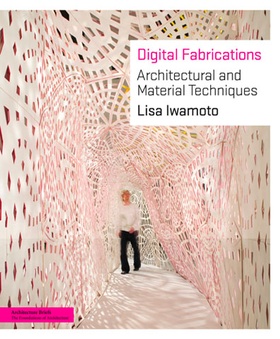 Digital Fabrications : Architectural and Material Techniques (Amazon USA and UK.)
Digital Fabrications : Architectural and Material Techniques (Amazon USA and UK.)
Publisher Princeton Architectural Press says: Architectural pioneers such as Frank Gehry and Greg Lynn introduced the world to the extreme forms made possible by digital fabrication. It is now possible to transfer designs made on a computer to computer-controlled machinery that creates actual building components. This “file to factory” process not only enables architects to realize projects featuring complex or double-curved geometries, but also liberates architects from a dependence on off-the-shelf building components, enabling projects of previously unimaginable complexity.
Digital Fabrications (…) celebrates the design ingenuity made possible by digital fabrication techniques. Author Lisa Iwamoto explores the methods architects use to calibrate digital designs with physical forms. The book is organized according to five types of digital fabrication techniques: tessellating, sectioning, folding, contouring, and forming. Projects are shown both in their finished forms and in working drawings, templates, and prototypes, allowing the reader to watch the process of each fantastic construction unfold. Digital Fabrications presents projects designed and built by emerging practices that pioneer techniques and experiment with fabrication processes on a small scale with a do-it-yourself attitude.
Views inside the book:
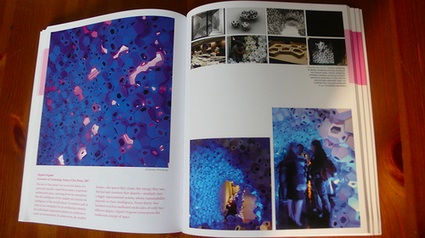
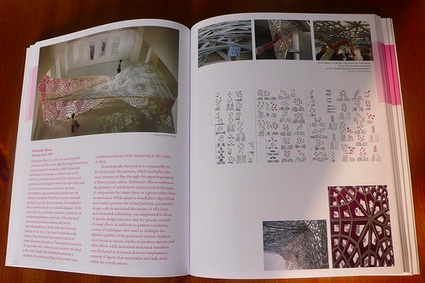
If i had to recommend you one book about the use of digital tools in architecture, it would be this one. Written by an expert who is also a successful practitioner (Lisa Iwamoto, a leader in the field of digital fabrications, is associate professor of architecture at UC Berkeley and a principal of IwamotoScott Architecture), Digital Fabrications is pleasantly approachable. First, there’s the visual appeal of the publication. It is a light, compact book shock full of fabulous pictures and concise yet precise descriptions of the many projects covered. The most engaging characteristic of the volume however is its content. The author has chosen to highlight the innovative and DIY attitude that reigns among designers and architects who use digital technologies. Many of the projects are detailed and made comprehensible with graphics and pictures making it a great inspiration for other architects as well as for students. In fact, students projects are also featured in the book.
Each type of digital fabrication -sectioning, tessellating (see the example on the cover of the book: Technicolor Bloom by Brennan Buck), folding, contouring and forming- is explained clearly and then illustrated through descriptions of pioneering case studies, driving you smoothly from the working method adopted by the architects to the final result of their experiments.
Be warned that the focus is blatantly on US architects (with a preference for the East Coast.)
Thom Faulders‘s screen façade for Airspace Tokyo is an example of tessellating technique. Four different overlapping organic patterns are made of laser-cut aluminium and plastic composite.
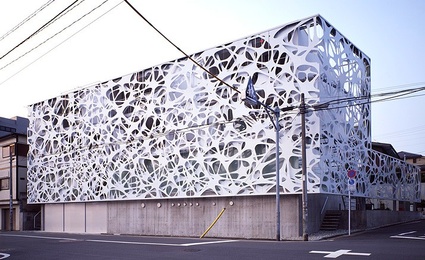 Thom Faulders, Airspace Tokyo exterior. Image: Tatsuo Masubuchi
Thom Faulders, Airspace Tokyo exterior. Image: Tatsuo Masubuchi
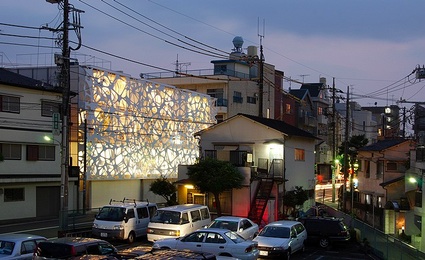 Airspace Tokyo exterior. Image: Studio M/Thom Faulders
Airspace Tokyo exterior. Image: Studio M/Thom Faulders
Folding technique: 3,500 molecules recycled cardboard molecules arranged in an interpretation of Cartesian space by Chris Bosse and the students at the University of Technology in Sydney.
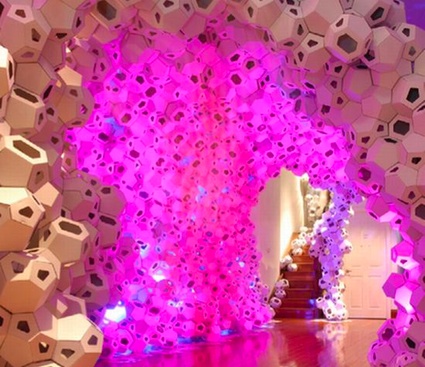 Chris Bosse and the students at the University of Technology in Sydney, Digital Origami
Chris Bosse and the students at the University of Technology in Sydney, Digital Origami
And now for the forming technique, Andrew Kudless and Matsys’ P_Wall investigates the self-organization of both plaster and elastic fabric, to produce evocative visual and acoustic effects.
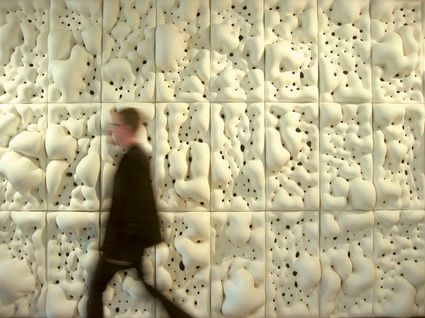
Related stories: C.STEM 2008: Breeding Objects – Computational Design, from Digital Fabrication to Mass-Customization, Generator x – Beyond the Screen, Encoded art works.
Bonus! Greg Lynn talks about the mathematical roots of architecture — and how calculus and digital tools allow modern designers to move beyond the traditional building forms.
Image on the homepage: Chris Bosse, Entry Paradise Pavilion, 2006.
